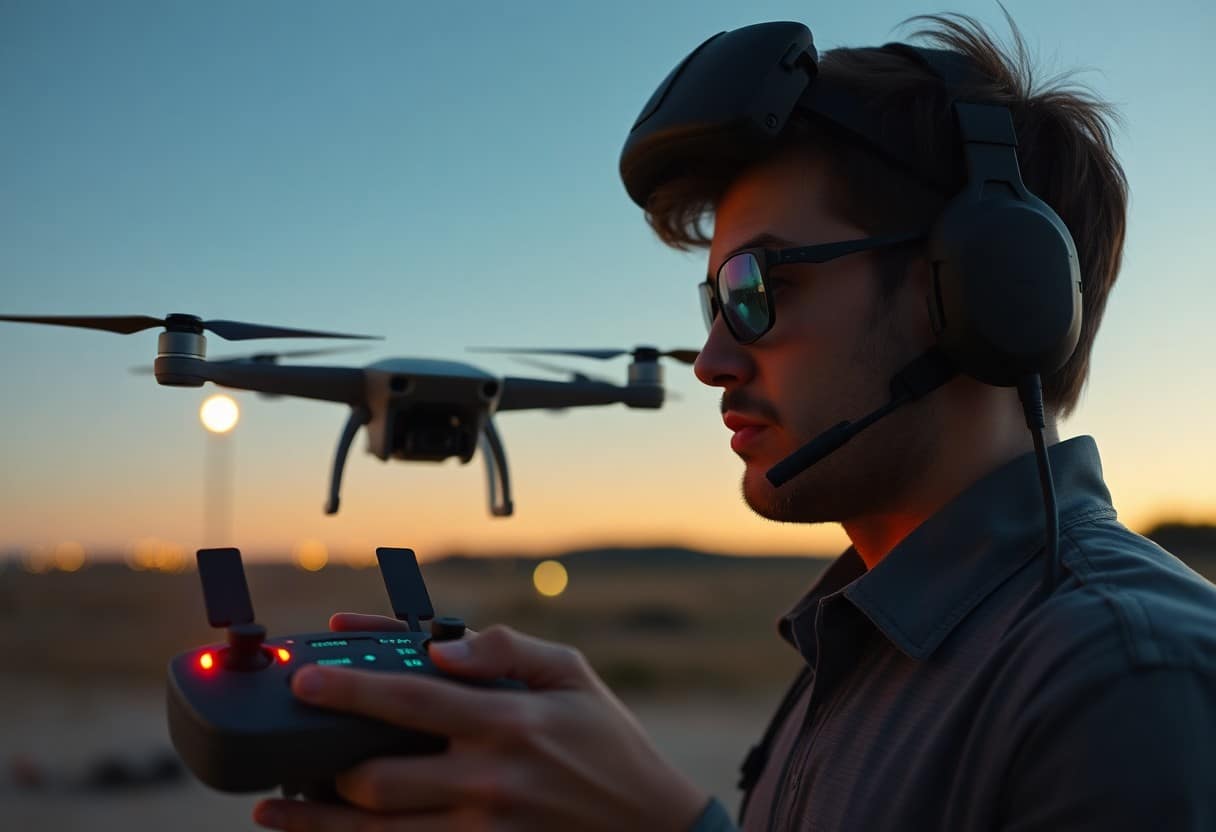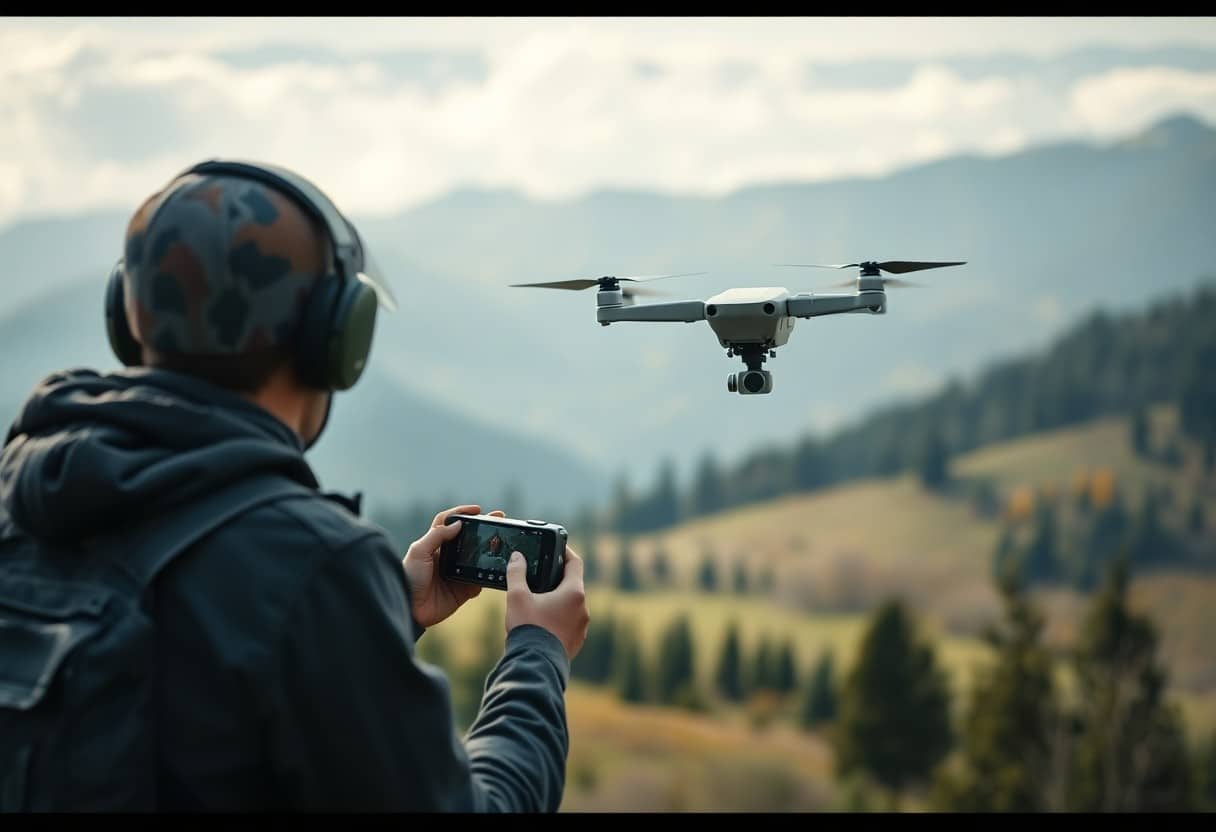How Pre-Flight Inspections Improve Compliance with Drone Regulations
Before operating the drone, you must perform aRigorous pre-flight inspectionThis is not only to ensure that the equipment issafetyIt's still possible.Strengthening Your Drone Regulationscompliance. Through these inspections, you can identify potential problems ahead of time and ensure that all required permits and specifications are being followed, reducing the number ofLegal Risksand the potential for accidents. By practicing good habits, you will not only improve flight safety, but also increase your sense of responsibility as a drone operator.
Key Points:
- Pre-flight InspectionEnsure that all systems are functioning properly to minimize the risk of failure.
- ComplianceConfirm that all equipment complies with local aviation regulations prior to flight.
- Utilization ChecklistIt helps the pilot to systematically check every important element.
- Flight Data LoggingProvides strong evidence of compliance and flight safety.
- Risk AssessmentInspections are used to identify potential problems, thereby enhancing flight safety.
- Education and TrainingIncrease operator awareness and compliance with regulations.
- Continuous ImprovementOptimization of technology and procedures based on the results of the inspection.
Understanding Drone Regulations
Drone regulations were created to ensure air safety and public protection. These regulations require you to follow a specific code of conduct when operating a drone. Understanding these laws not only helps you fly legally, but also avoids potential liability, allowing you to safely enjoy your drone.
Overview of the regulatory framework
UAV regulations are usually set by official organizations such as the National Aviation Administration (NAA) and cover requirements such as flight altitude, distance, and area of flight. These frameworks are designed to harmonize safety between the operation of drones and other aviation activities. Understanding these frameworks will make it easier for you to comply with the relevant legal requirements.
Main compliance requirements
When operating a drone, there are key behavioral requirements that you must follow, such as obtaining the necessary licenses, conducting system checks and following safe flight rules. These requirements reduce the incidence of accidents and protect your safety and the safety of others.
In terms of compliance with requirements.Obtaining a suitable licenseis the first step. Make sure you enroll and pass the test as required by local law. In addition, you should regularly takeSystem Checkto ensure that the drone functions properly and meets safety standards. Understand and followSafe Flight RulesThe maximum altitude and distance allowed can help you avoid conflicts with other aircraft, andReducing legal liabilitiesThese key requirements not only guarantee your legality, but also enhance the safety and comfort of your flight. These key requirements not only ensure your legality, but also enhance the safety and comfort of your flight.
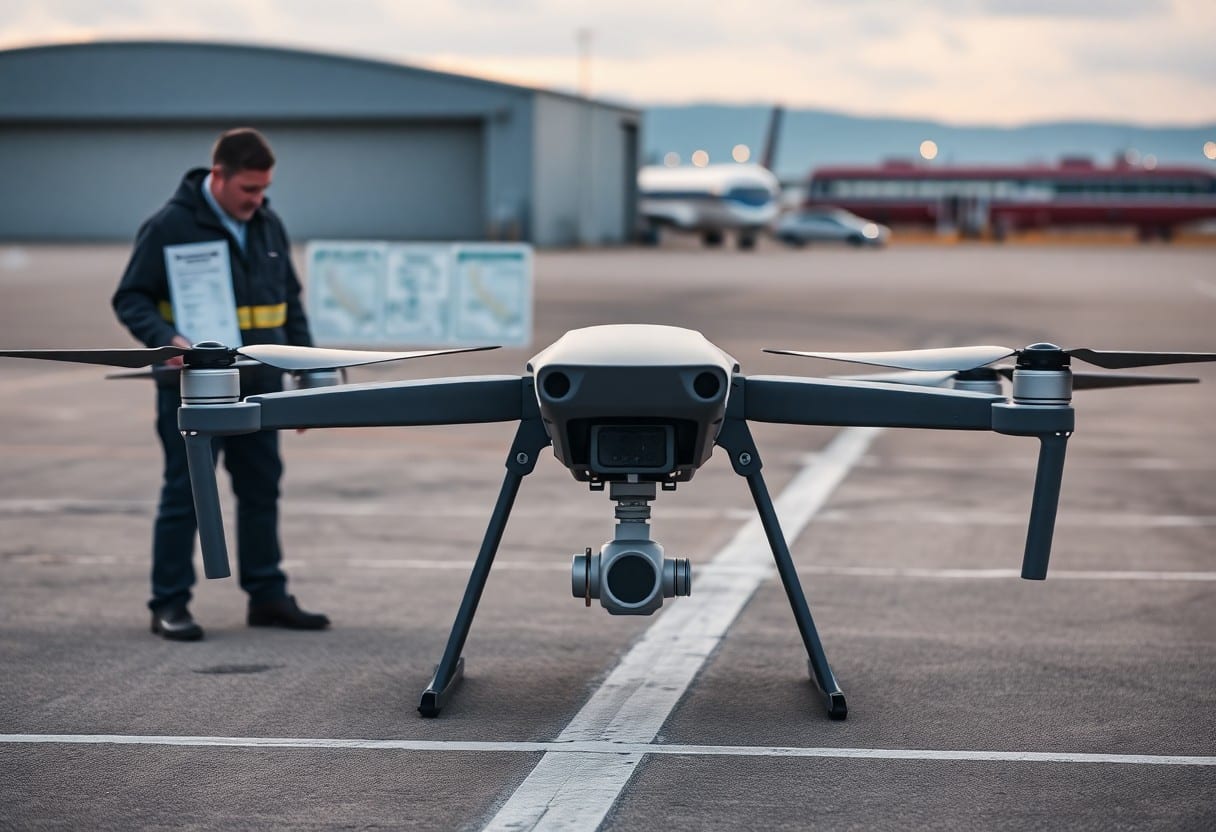
The Importance of Preflight Inspection
proceedPre-flight InspectionIt is important to ensure that your drone is operated in a compliant manner. Not only is it a requirement to comply with regulations, but it is also a key factor in improving the safety and efficiency of your flights. With a detailed checklist, you can review your drone's functions and avoid potential malfunctions. At the same time, mastering theWhat basic drone controls should every new pilot be familiar with?This will help you stay in compliance and boost your confidence in your operations.
security consideration
Conducting a preflight inspection allows you to identify and eliminate potential problems that could lead to an accident. Ensure that all systems are functioning properly, especially in critical control systems and battery conditions. Proper inspection and maintenance can significantly reduceFailure to fly.and accidental risks to keep you and others safe.
Risk Mitigation
Pre-flight checkups can reduce the chance of accidents. You should regularly check your drone's batteries, propellers, and sensors, all of which are important factors in flight safety. Through thorough inspections, you can detect problems early and solve them in a timely manner.Reducing Potential RisksThe
Further elaboration emphasizes thatRisk MitigationThe importance of the checklist is such that you must establish a systematic checklist. The checklist should include not only an assessment of technical performance, but also an assessment of the flight environment, including climatic conditions and working conditions in the flight area. These steps will ensure that you are well prepared for each flight, minimizing potential risks and ensuring a smooth and safe flight.
Effective pre-flight inspection components
Prior to drone operations, you need to perform an effective preflight inspection to ensure that all necessary components are functioning properly. This includes a thorough inspection of the equipment and an assessment of the environmental factors. Proper pre-flight checks can help you avoid accidents and ensure that your flight plan complies with local regulations.
Equipment Confirmation
Prior to each flight, you must perform theEquipment Confirmation. Ensure that all components, such as batteries, propellers, cameras and sensors, are in optimum condition. Check for any signs of wear or damage to prevent failure during flight.
Environmental Assessment
proceedEnvironmental AssessmentIt's a critical step in ensuring a safe flight. You need to consider weather conditions, wind speed, visibility and other environmental factors that can affect your drone's performance. Understanding these factors can help you make informed flight decisions.
When conducting an environmental assessment, you should pay particular attention toWind speed and climate conditionsStrong winds can cause loss of control of the drone. Strong winds can cause loss of control of your drone, while bad weather can obscure visibility and increase the risk of an accident. Remember to check your local weather forecast, assess visibility, and consider whether there are any other obstacles, such as power lines or buildings, that could affect the safe flight and operation of your drone.
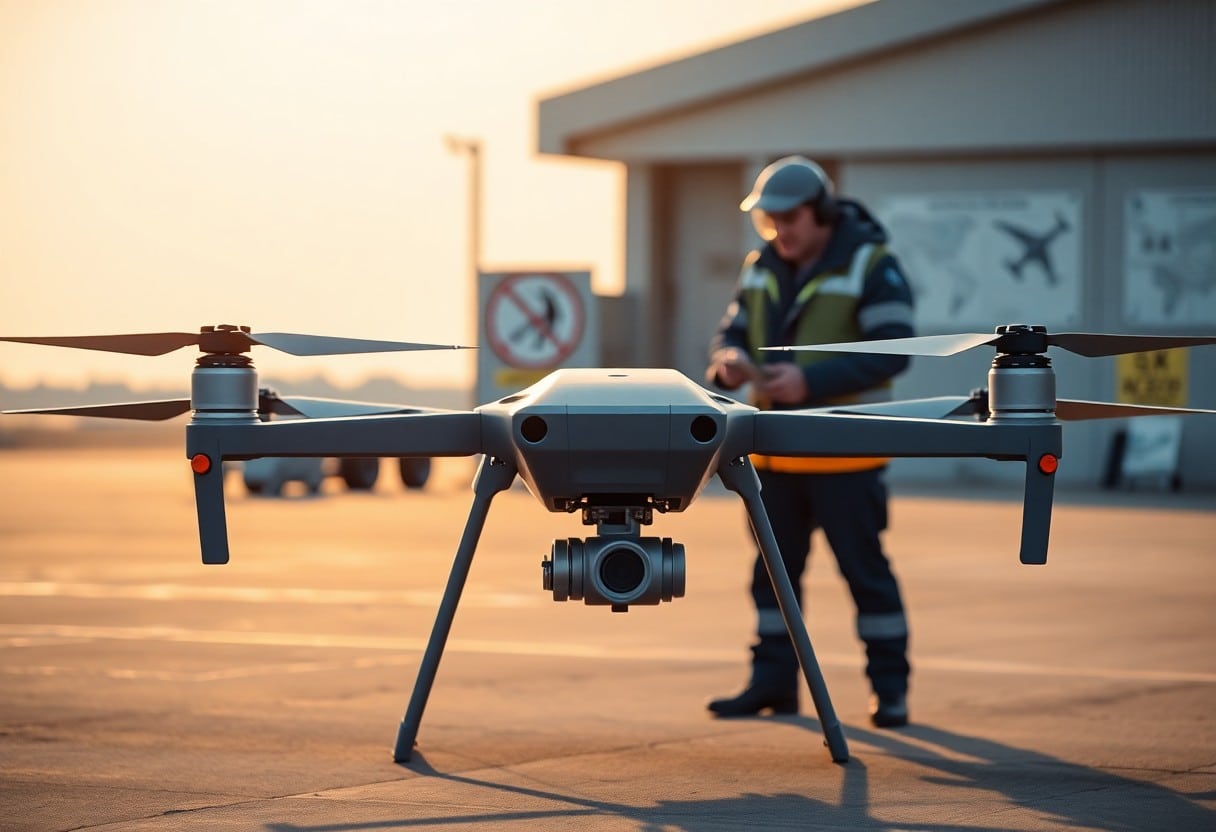
Training and Skills Development
In drone operations, conductThorough trainingSkill development is of paramount importance. Through structured training, you can acquire the knowledge and skills necessary to ensure compliance and safety during pre-flight inspections. This not only increases your operational confidence, but also reduces potential legal risks.
Operator Education
To ensure the legality of your drone operation, you must take the appropriate educational courses to deepen your understanding of drone technology. These courses will help you masterBest Practices, and understand how to conduct pre-flight inspections safely and efficiently to avoid unnecessary accidents.
Regulatory Awareness
It is the responsibility of every operator to have an in-depth knowledge of drone-related laws and regulations. Keeping up to date with currentRegulatory RequirementsSensitivity not only ensures that you are operating in compliance, but also minimizes the risk of legal disputes. This is a fundamental ethic for any drone operator.
Increased compliance awareness will help you to be aware of unacceptable behavior and the importance of being compliant. Strengthening your compliance awareness will not only help protect your own legal rights, but will also ensure thatFlying Safety. Knowing and following local drone regulations will greatly reduce the risk of accidents and legal issues, so be consistent in updating your knowledge and seek professional guidance when necessary.
Case Study: Compliance Success Stories
Successful case studies provide important insights when exploring drone compliance:
- XYZ Drone Company: Through rigorous pre-flight inspectionsTheir accident rate dropped to only 1%.
- ABC Drone Service: Business expanded 50% after a one-year compliance inspection because of their knowledge of and adherence to the regulations.
- DEF Drone Team: Implemented regular training and successfully performed over 300 assignments without any irregularities.
Organizations that lead by example
Some drone organizations actively promote compliance by establishing clear inspection processes and rituals. Their practices not only enhance teamwork, but also increase the commitment of all members to safe operations.
Non-Compliance Lessons
There are important lessons to be learned from the many cases of non-compliance. By analyzing the causes of accidents, you will find that many violations stem from a lack of clear understanding of the rules or a failure to follow them.Pre-flight checkThese problems can lead to serious legal consequences and losses. These problems can lead to serious legal consequences and losses.
The consequences of non-compliance are often significant and dangerous. For example, at a drone company, failure to conduct properPre-flight check, whose remotely operated machine crashed over the city, causing theLoss of moneyrespond in singingReputational damageThis incident is a reminder to ensure that you have a thorough inspection process in place before every flight to avoid similar accidents. This incident is a reminder of the importance of ensuring that you have a thorough inspection process in place before every flight to avoid accidents such as this one.
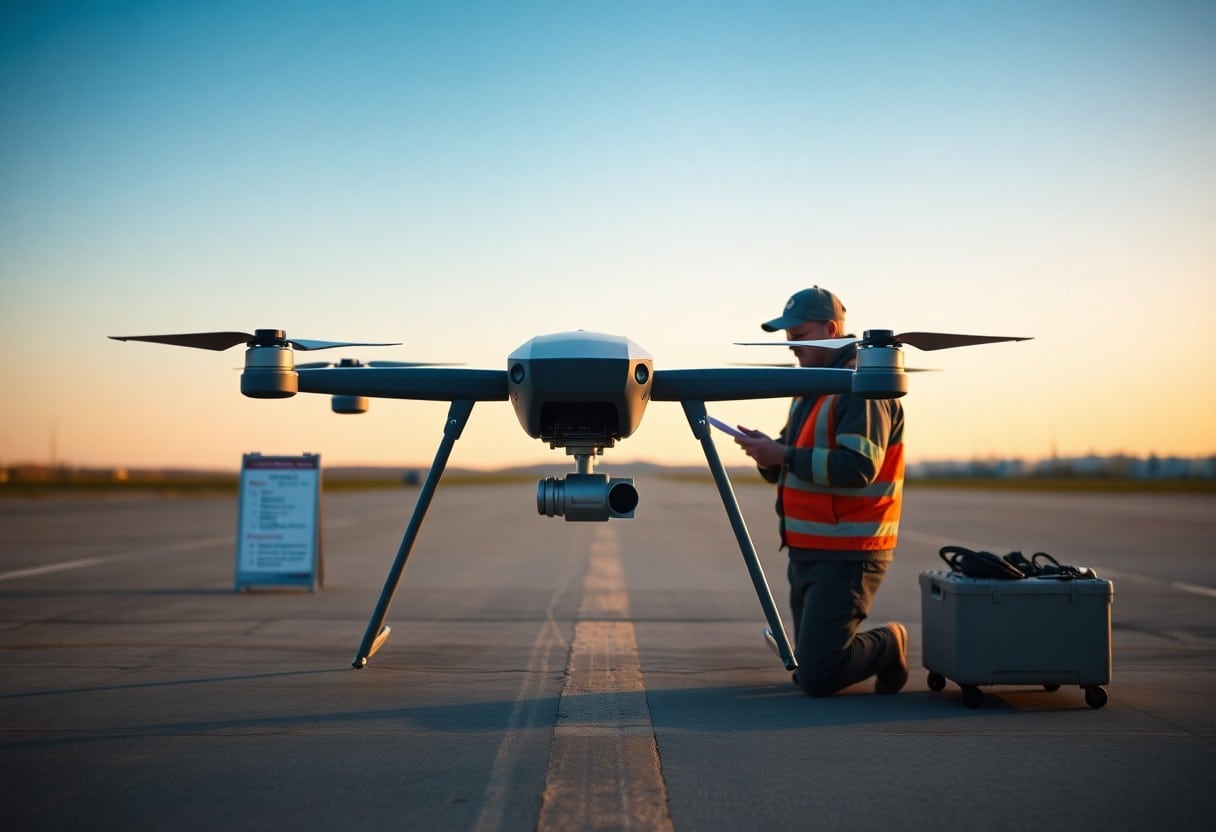
Recommendations for Implementation of Pre-flight Inspection
To ensure compliance with drone regulations, you should consider implementing a pre-flight inspection. It is recommended that a detailed checklist is carried out at regular intervals as this will not only increase operational safety but also reduce the risk of non-compliance. You can refer to this article to learn more aboutHow to prepare for the drone authorization process?The company provides support for your inspection program.
Developing Standard Operating Procedures
You need to ensure that all operators follow consistent standard operating procedures (SOPs). These procedures should detail what to check before each flight to ensure that you don't miss any important steps during each operation. This not only improves compliance, but also increases your confidence in your operations.
Leveraging Technology for Compliance
Utilizing technology can dramatically improve your compliance and flight safety. By applying drone management software, you can automate the inspection process to ensure that every operation complies with local regulations and safety standards. You can also use real-time data analytics to monitor flight status and identify potential problems in a timely manner. ThisActive monitoringMethods that allow you to prevent equipment failure and other problems before you fly.Safety hazardsTo improve the overall safety of your operations, we have developed a range of technology tools that can be utilized in a variety of ways. Ensure that these technology tools are utilized to protect you and others and ensure compliance.
How Preflight Inspection Enhances Compliance with Drone Regulations
Conducting a pre-flight check can help you ensure that your drone meets all safety and legal requirements before it flies, thereby increasing compliance with regulations. By thoroughly checking the functionality of the aircraft, battery status, communications equipment and other critical components, you can minimize the risk of accidents and ensure a smooth flight mission. By getting into the habit of pre-flight checks, you can improve the professionalism and compliance of your drone operations, so you can fly with confidence in any environment.
Frequently Asked Questions
Q: How do preflight inspections enhance compliance with drone regulations?
A: Pre-flight check ensures the safety and compliance of the drone before take-off and reduces the risk of non-compliant operations, such as checking the drone's functionality, battery level and necessary permits, thus increasing the overall compliance rate.
Q: What are the required items that should be covered in the Preflight Inspection?
A: Pre-flight inspection should include checking the drone's hardware condition, battery level, GPS connectivity, camera equipment working condition, and any relevant statutory permits or flight plans.Change Your Lens - 8 Steps to Cinema Drone Photography
Q: Does Preflight Check prevent human error?
A: Yes, with systematic checklists and processes, preflight inspections can greatly reduce human error, increase operator focus and ensure that every step is performed.
Q: Can the Preflight Checkup help with emergencies?
A: Yes, pre-flight check helps to detect potential problems in advance, and the operator can make adjustments in advance to effectively cope with possible malfunctions or unforeseen circumstances.
Q: How often should preflight inspections be conducted?
A: Pre-flight checks should be performed before every flight, especially if you have not flown for a long period of time or before flying in different environments, to ensure that the drone is in the best possible condition.
Q: How important is pre-flight check for commercial aerial photography?
A: For commercial aerial photography, pre-flight check is not only a legal requirement, but also helps to protect investment, ensure the quality of photography and increase customer trust.
Q: How do I train operators to perform effective preflight inspections?
A: Operators can learn the standard process of pre-flight checks through specialized training courses, simulated flights, and field exercises to ensure they have the necessary skills and knowledge.
